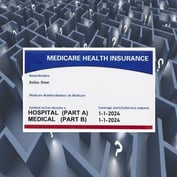More than a few times, I have interviewed insurance professionals who cannot meet the health underwriting requirements of insurance products they themselves design and/or market.
This unique piece of insurance lore raises a number of questions and issues in that most tender of areas: insurance underwriting. We will look at the issues here, ranging from personal to product.
It always is surprising when an insurance professional tells me of having a not-qualified status. The person might say something like this: “The policy really works well for the small business owner or mid- to upper-level executive. Id like to own one myself, but I cant, because I have (name a health condition)”
Naturally, I feel sad when I hear that. Here is an insurance pro who would like to buy an insurance product that he/she has built or helped build, or sold to others, but who cannot do so due to health factors. One wishes it werent so.
On the plus side, I am told that such circumstances have put fire in the belly of affected producers. That is, they become motivated to try to keep clients from suffering a somewhat similar fate. You know how it goes: “Joe and Jane, please consider buying this policy now while you still can qualify. Its really important. Let me tell you why”
A not-qualified status also keeps the juices flowing in certain product developers. Some say their own personal circumstance has given them a reason to adhere to best practices in design. The thinking is: “I may not be able to buy this, but I am bound and determined to build it the right way for those who can.”
Still, when professionals cannot qualify for the coverages they sell or develop, they are profoundly aware that they are going without. Some say this has made them more sensitive to the feelings of clients who cannot qualify.
But some also say it puts them in an awkward position at their firms. As you know, one of the most common tenets of product success is to “own it yourself.” But these professionals cannot do that. Does this mean they are contributing to a products failure? Its doubtful. Yet some worry how their fortunes will fare if word gets out that they do not own the policy they are championing.
Now, for the bigger issue: Underwriting itself. These personal vignettes never fail to remind me about how strongly industry people feel about underwriting.
Most producers with whom I speak say they do understand an insurers need for medical (and financial) information–that it fosters competitive and accurate pricing for risk borne. But many also feel confounded by the various underwriting requirements, the different practices among insurers, and the declines and rate-ups that “seem to come out of left field.” Some just wish for less selectivity, so more clients could qualify at affordable rates. A few tell of feeling emotionally drained, when having to deliver news of a decline or rate-up.








 February 12, 2004 at 07:00 PM
February 12, 2004 at 07:00 PM










